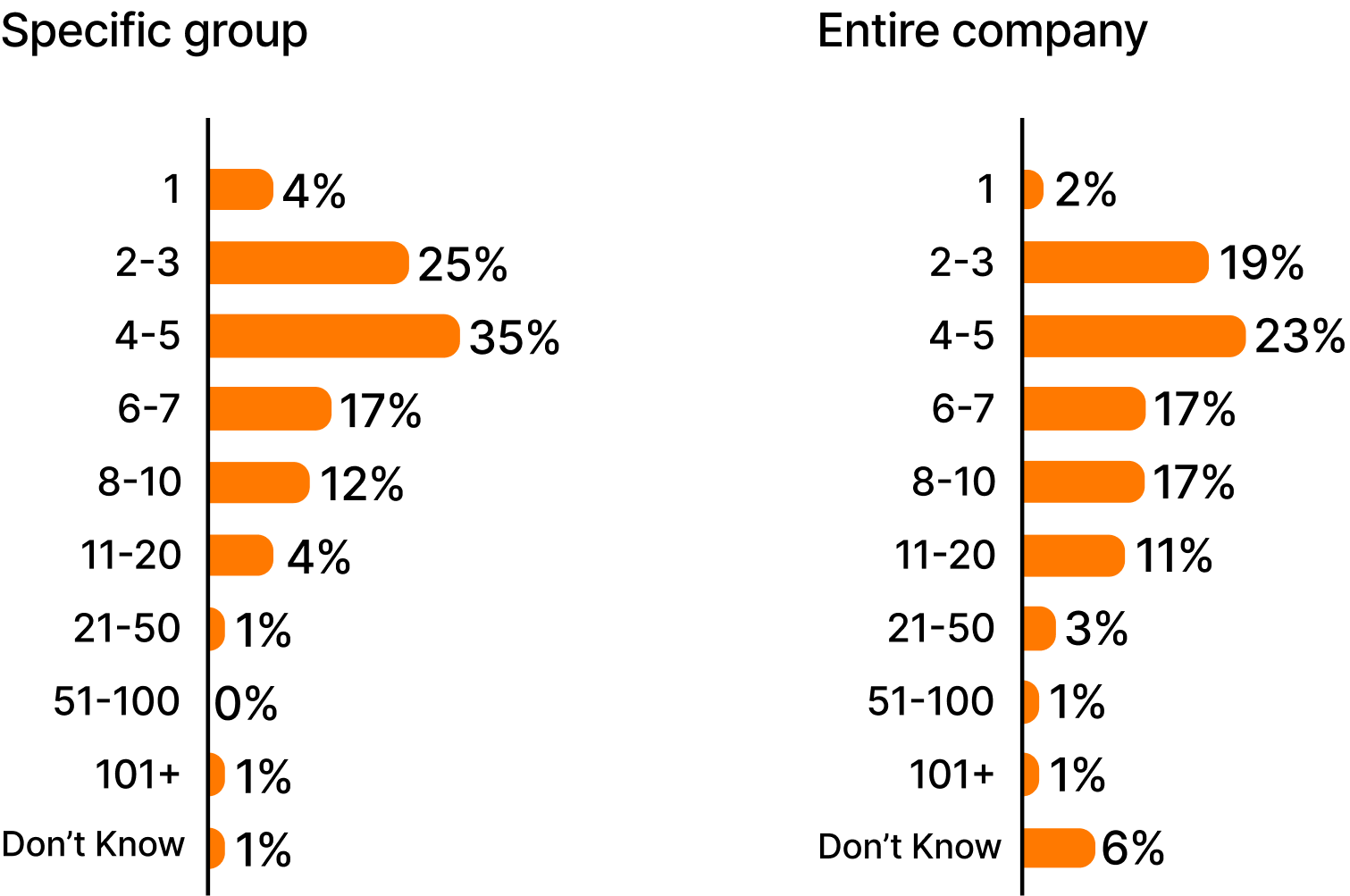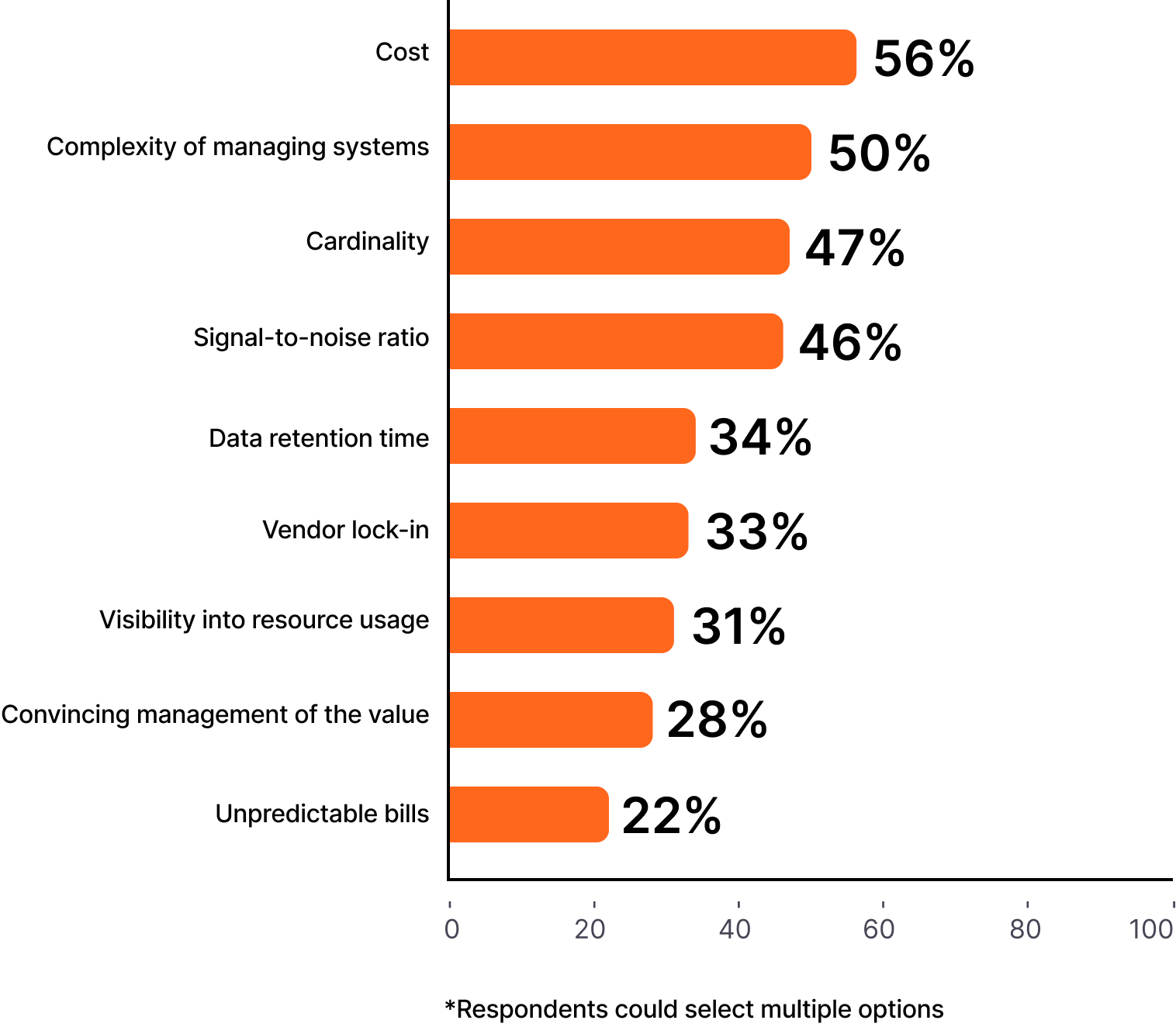Grafana Labs
Observability Survey
2024
Key findings and analysis on the state of observability
Introduction
Observability has become an integral part of how many organizations build and maintain their systems, helping to improve performance, reduce toil, and save money through better resource utilization. However, these outcomes aren’t guaranteed, and many teams still struggle to adapt to the complexity of this evolving space.
To better understand where organizations are in their observability journeys — as well as the wins and losses that have come as a result — we solicited feedback from the community for our second annual Grafana Labs Observability Survey. We heard from more than 300 industry practitioners who shared their experiences, helping to provide an intriguing snapshot of where the industry is today and where it’s headed.
In this report, you’ll find a breakdown of the survey results, which point to a maturing market where teams are juggling dozens of tools and data sources. You’ll also see that open standards have emerged as a means to address this complexity, while at the same time, teams continue to push for more automation and accountability.
Survey snapshot
Most used observability technologies

5 key takeaways

Observability practices are still maturing

Tool and data sprawl remains a major hurdle

Open source is the de facto standard
AI could play a big role — eventually

Cost emerges as a top concern
The continued (uneven) maturation of observability

More organizations have centralized observability

Centralized observability saves time and money
If your organization has centralized observability, has that led to time/cost savings?

By industry





Helping teams instrumenting and storing observability data means that they can spend more time focusing on their core tasks.
- Respondent from a large European technology company on the benefits of centralized observability
Few organizations take a systematic approach
Which best describes the maturity of your organization’s current observability efforts?
Reactive:
Customers are bringing you problems before you know about them. Time is spent responding to issues reported by users.
Proactive:
You work to develop procedures and implement tools to know about issues before your users do. You are able to prevent issues from impacting customers some of the time.
Systematic:
You develop procedures and implement tools to know about issues before your users do, and are able to minimize impact to users. Observability and performance testing are implemented early in the SDLC, preventing issues from occurring in production.
Accountability still lags behind
Application observability is on the rise
The more mature an organization’s observability strategy, the better the results

So. Many. Tools.
What observability technologies* does your group use?

*Respondents could pick multiple technologies
Teams rely on lots of data sources …
How many data sources do you/your group have configured in Grafana and actively use?

… and lots more tools
How many observability technologies are you using?

Company size and industry make a difference
Six or more data sources
Six or more observability technologies (group)
Six or more observability technologies (company)
We achieved a remarkable 34% reduction in MTTR, enhancing system reliability and streamlining operational processes, leading to a 29% decrease in overall overhead.
- Respondent from a small Asian software company on the benefits of centralized observability
Correlating data has multiple benefits
If you correlate data in this manner, what value* do you get from it?

OSS is the de facto approach to observability
8 of the top 10

of the most popular observability technologies in use are open source
Are you using observability tools under an open source or a commercial license?
Prometheus remains a mainstay of observability
How much have you invested in Prometheus?

How does your Prometheus usage today compare to a year ago?

OpenTelemetry is on the rise
How much have you invested in OpenTelemetry?

How does your OpenTelemetry usage compare to a year ago?

It’s not either/or with Prometheus and OpenTelemetry
OpenTelemetry-Prometheus overlap
Open standards go hand in hand with many tools
What’s next: addressing gaps and driving innovation
Cost, complexity still loom large
Biggest concerns about observability*


AI could be a boon to observability automation and assistance
Which AI/ML-powered features* would be most valuable to your observability practice?

Early days for observing AI
Excitement abounds for OSS, AI, and broader adoption
Observability topics respondents are most excited about
The fourth most cited answer, eBPF, is another topic to keep an eye on going forward. While only 7% say they’re using the kernel-level technology in production, 42% say they’re talking about it or building POCs.
Finding ways to make onboarding easier would be great. There’s a lot of very interesting tech, but still such a knowledge barrier between those who get observability and those who don’t.
- Respondent from a large Asian media and entertainment company
About the respondents and methodology
What industry is your organization in?

What is the size* of your organization?

What region are you based in?

Conclusion
On behalf of Grafana Labs, we want to thank those who participated in the survey as well as those who took the time to view the results. The open source community, our customers, our contributors, and our users are all integral to everything we do here, and your input shapes how we operate and improve our projects and products on a daily basis.
We’re excited to see how far observability has come and how organizations are putting these tools and techniques into practice around the globe and across different industries and organizations of all sizes.
Compare this information to last year’s survey results:2023 Observability Survey Results
